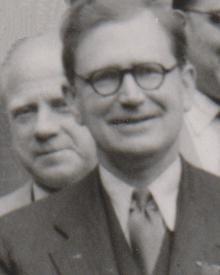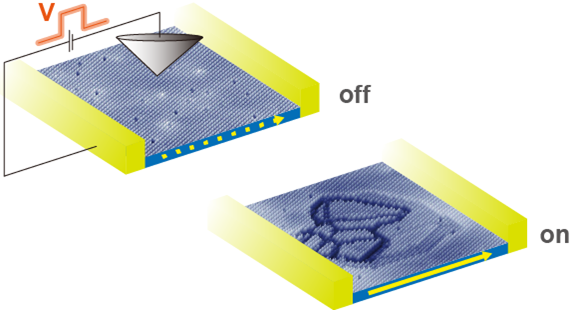주메뉴
- About IBS 연구원소개
-
Research Centers
연구단소개
- Research Outcomes
- Mathematics
- Physics
- Center for Theoretical Physics of the Universe(Particle Theory and Cosmology Group)
- Center for Theoretical Physics of the Universe(Cosmology, Gravity and Astroparticle Physics Group)
- Center for Exotic Nuclear Studies
- Center for Artificial Low Dimensional Electronic Systems
- Center for Underground Physics
- Center for Axion and Precision Physics Research
- Center for Theoretical Physics of Complex Systems
- Center for Quantum Nanoscience
- Center for Van der Waals Quantum Solids
- Chemistry
- Life Sciences
- Earth Science
- Interdisciplinary
- Institutes
- Korea Virus Research Institute
- News Center 뉴스 센터
- Career 인재초빙
- Living in Korea IBS School-UST
- IBS School 윤리경영


주메뉴
- About IBS
-
Research Centers
- Research Outcomes
- Mathematics
- Physics
- Center for Theoretical Physics of the Universe(Particle Theory and Cosmology Group)
- Center for Theoretical Physics of the Universe(Cosmology, Gravity and Astroparticle Physics Group)
- Center for Exotic Nuclear Studies
- Center for Artificial Low Dimensional Electronic Systems
- Center for Underground Physics
- Center for Axion and Precision Physics Research
- Center for Theoretical Physics of Complex Systems
- Center for Quantum Nanoscience
- Center for Van der Waals Quantum Solids
- Chemistry
- Life Sciences
- Earth Science
- Interdisciplinary
- Institutes
- Korea Virus Research Institute
- News Center
- Career
- Living in Korea
- IBS School
News Center
|
IBS researchers succeed in controlling the metal-insulator transition of a Mott insulator in nanoscale Center for Low Dimensional Electronic System (CALDES) successfully manipulated a transition-metal dichalcogenide (TMD) to achieve its excited metallic phase in nanoscale January 22, 2015
Mott insulators can be traced back to the work of English physicist Nevill F. Mott whose revolutionary research won him a share of the 1977 Nobel Prize for Physics. Mott insulators are a curious collection of materials that should conduct electricity but, when measured under low temperatures are insulators. The insulating phase is achieved by electron interactions, not considered in conventional band theory. When the transition between Mott insulating and metallic phases is achieved, Mott materials hold great promise for transistors and memory devices that feature higher energy efficiencies and faster switching speeds that are vastly superior to today’s devices. Director for CALDES Han Woong Yeom led a team that succeeded, for the first time, in the nanoscale manipulation of the metal-insulator transition of the Mott insulating phase of 1T-TaS2 - a layered material, and the only TMD known to develop the Mott phase. Previous research demonstrated that the ultrafast metal-insulator transition is possible under strong laser pulse, but the electric manipulation required for devices was not achieved and moreover, the origin of the transition was elusive. The CALDES team’s results are the first time such evidence detailing the phase transition have been reported. The unprecedented switchability of the Mott phase of 1T-TaS2 is, according to the research team, due to the coupling of the Mott phase with the charge density wave (CDW). A CDW is a low-energy ordered state of solids among TMD materials. In 1T-TaS2 the Mott insulating phase has been known to be driven by the formation of the CDW in addition to the electronic interaction and thus by destroying the CDW, the otherwise robust Mott phase could be manipulated. The metallic phase of the Mott insulating phase of 1T-TaS2, as demonstrated in this work, are reversibly formed and erased in nanoscale with an atomically abrupt phrase boundary by applying voltage pluses from a scanning tunneling microscope (STM) tip; an instrument for imaging surfaces at the atomic level. According to the team’s paper, published in the current edition of Nature Communications, and entitled Nanoscale manipulation of the Mott insulating state coupled to charge order in 1T-TaS2 , the current transition is “largely electronic and the resulting metallic state is a novel correlated state near the Mott criticality. The uniqueness of the present system lies on the intercoupled nature of the Mott state with the CDW order.” The present system in combination with the nanoscale controllability is expected to provide an unprecedented novel device platform based on correlated electronic systems.
|
|||
Center for Artificial Low Dimensional Electronic SystemsPublication Repository |
| Next | |
|---|---|
| Next |
- Content Manager
- Public Relations Team : Suh, William Insang 042-878-8137
- Last Update 2023-11-28 14:20














